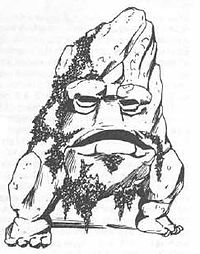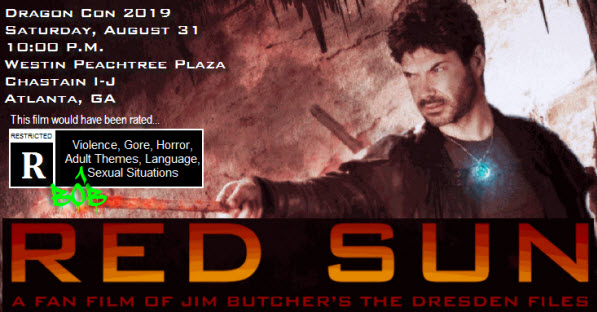Hags – I was curious about this one because hags are always really interesting when they show up in other monster entries. They’re tightly tied to the mythos of the fiends in a way that suggests they’re an ancient race, sort of a fiendish equivalent to the titans. This is not quite the story that their own entry tells, and while that irks me somewhat, it is offset by what the entry does.
Like the ghost, the hag is very clearly written for a scenario, and by scenario I really mean horror movie. Though the hags themselves are not terribly potent (CR 3 for the green hag, 5 for the night hag and 2 for the sea hag) they are very clearly not written as stand up fights. Their abilities are rife with illusions and disappearing tricks, and as a group (there are rules for covens) they have access to fairly substantial magical firepower, but their motives will drive a lot of indirect nastiness. They’re not going to seek out adventurers, adventurers will have to find them. And doing so won’t be pleasant.
Half Dragon – This is a template, and it basically adds immunity and breath weapon appropriate to the dragon type, as well as some minor abilities. It’s a pure mechanics, and there are two interesting tidbits to it.
First, while the sample creature is a humanoid, there’s an explicit note that the breath weapon is more potent if the base creature is larger. That makes sense (especially with the 5e logic of simply making large creatures more dangerous rather than using fiddly size rules) but also suggests some really lovely/terrible combinations. I admit I am totally struck by the idea of a half dragon aboleth as the ultimate monstrosity.
Second, the impact of adding the template on the challenge rating of the target is not documented. The example given increases a veteran (CR 3) to CR 5, which would suggest that it’s +2 to CR, but they also improved his armor and gave him more hit points, neither of which are elements granted by the template. In short, I am not entirely sure what’s going on, mechanically, and I hope the DMG will eventually shed some light on this.
Harpy – Brief note: this is probably the most naked image of a woman in the book, and it looks tragic, not skeevy. This was a nice turn and utterly appropriate, as the harpy lore is entirely mythic, full of tragedy and love and curses upon the gods. I’m not sure it has much in the way of play hooks, but it’s got a good feel, so I’m ok with that, especially since it leaves plenty of space for how to actually run a harpy encounter, including it’s charming song (which is potent, but provides lots of opportunities to get out of)
Hell Hound – The lore is basically “Evil. And fiery” so not a lot to work with that. Their tactics are self-explanatory in their statblock – pack tactics + Immunity to fire + fiery breath suggests a very unpleasant dogpile.
Helmed Horror – I always feel bad for these dudes, since they come across like low rent death knights. It’s a cooler looking, slightly smarter suit of animated armor who can fly. It’s nasty, has lots of resistances, has a tactical note that it explicitly takes advantage of its ability to fly. However, all of this, combined with magical resistance , immunity to 3 spells of the creator’s choosing and a complete lack of ranged abilities mean that basically this is a monster designed to melee the wizard.
This is not as much of a jerk move as in previous editions, but it’s still pretty harsh. Not that it’s necessarily a bad thing, but it’s important to know what you’re working with.
Hippogriff – I take back everything I said about the griffon – the hippogriff is even more boring. Horse + eagle. Done.
Hobgoblins – Another humanoid race. Historically, Hobgoblins have been “the lawful ones” which mostly means they boss around other races and are somewhat militaristic about it. This entry pretty much doubles down on that – one nice bit of color reveals that every member of hobgoblin society has a military rank – and it mostly works. It very clearly lays them out as organized adversaries willing to use other monsters as disposable shock troops, and their specific combat ability (substantial extra damage to all members of a pile-on when ganging up on someone) means they’re pretty nasty in a scrap.
However, they really skirt the monstrous line. The issue of evil humanoid races is one which can potentially be very complicated, and part of the implicit agreement of making them monsters is that they will be framed in such a way that if we really want to remove that complexity, we can. This is done by, well, making them, well, monstrous. The problem is that the hobgoblins really press the limits of that. They’re super warlike, but they’re also clearly very thoughtful about it, and have an entire culture predicated on it. I read this entry and I want them to be a nation in my world, not the occupants of my dungeons.
That’s not necessarily a bad thing – it suits my tastes – but if a player is looking for uncomplicated baddies, the hobgoblins may be a mismatch.
Homunculous – Look, there’s very little of real interest to the Homunculus itself. Flight, Negligible stats, a bite that causes sleep. that’s about it. What really matters is that this little dude is telepathically bonded to its creator, offering many of the benefits of a familiar and more. However, since there’s no information on how these little things are made, for the moment, this is purely the domain of NPCs.
Hook Horror – This would be the most preposterous of monsters if I did not fondly recall the toy of the same name. Mechanically uninteresting, visually weird, these seem to largely exist to be on hand for after the party gets bored with owlbears. But they get the nostalgia pass.
Hydra – This is always a hard monster to handle. In 3e, they had too few hit points, which were then divided among the heads, making each head super fragile. This approach skips that in two ways. First, because hydras are huge, they start with a substantial number of hit points. Second, the hit point value for chopping off a head is a flat 25+ HP in a single attack. Should you do so without using fire, then the next round it grows 2 new heads for each one lost, healing 10HP per new head. This means you can grind a Hydra down, but it’s not going to be easy.
Even better, the rules feel nicely multiheaded. It gets one attack per head, plus one reaction (for an opportunity attack) per head. One head is always awake, and the multiplicity of heads give it advantage against effects that would frighten, charm, blind etc. – things that having multiple heads seems like it would help with.
Add in a nicely epic backstory – When Tiamat defeated the god Lernaea and tore her apart, where each drop of blood fell, a Hydra was born. Mythic. Appropriately named. The sort of thing that makes each hydra feel like a significant challenge without it being necessarily unique. Plus, it’s easy to use that story to justify curious one-offs. A half-red-dragon hydra would be an impressive terror, as the addition of fire resistance to the mix would be a dangerous touch.
Intellect Devourers – This is another tactical monster – there’s some backstory, but it’s basically “Illithid are creepy, and these are their little brain buddies”. Really, the heart of this monster is in its stat block, where it will attempt to blast your brain and, if successful, will teleport into your skull, devour your mind, and pilot your body like a meat suit.
While only CR 2, these are one of the nastiest creatures I’ve seen, as they have one of the only one-shot-takedown-and-you’re-probably-dead abilities. There used to be a lot of these (think Harpies and Dryads) but the game has gotten much more liberal in how often you get to make saves against these things. Not so for the intellect devourer. It’s got a 10″ range psychic attack. Int save DC 12 or you take some damage. More critically, if you fail that save, roll 3d6 – if that equals or exceeds your intelligence, your intelligence drops to 0. Enjoy drooling on the floor.
One shot take out not bad enough? Well, now that you’re drooling, it initiates an intelligence contest with you. When it wins, it hops into your skull. That’s basically game over for you unless your buddies beat you like a piñata, or cast the right spells fast enough.
Bottom line, this is a scary monster. Like, maybe crossing the threshold of the implicit GM/Player understanding scary. Some tables will be fine with that. For others, this is one of those monsters that will probably be made more scary by it attacking NPCs, or otherwise used very cautiously. But figure out which way your GM leans before deciding to use intelligence as your dump stat.
Invisible Stalker – Not a lot of depth to this one, but that doesn’t keep it form being scary. and invisible flier with multiattack is going to be really dangerous against any group that isn’t ready for it. What’s more, it’s explicitly got someone behind the scenes, calling the shots.
As I conclude the I’s, I admit to my disappointment in the absence of Ixitxachitl for utterly irrational reasons. Intelligent manta rays with evil magic is just the sort of gonzo thing I have been enjoying in this edition.


